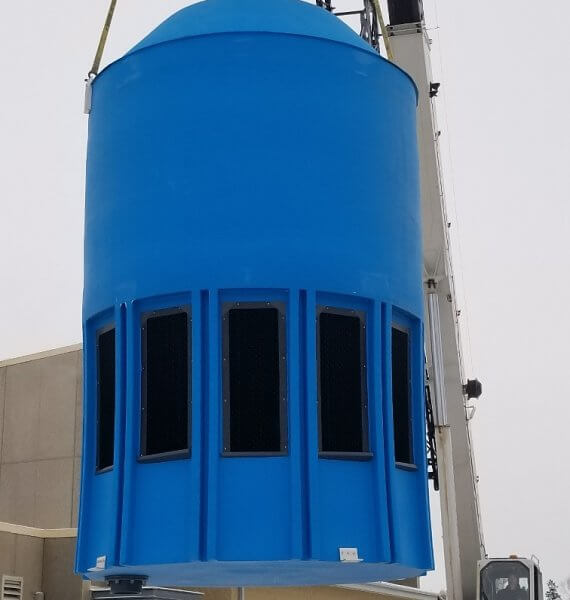Cooling Towers — Anti-Microbial Cooling Towers
Additional Information
Anti-Microbial Cooling Towers – The Smart Way to Minimize Legionella Risk
Introducing our NEW Anti-Microbial Cooling Tower Shell with Anti-Microbial HDPE resin, which is fully compounded throughout and withstands most aggressive chemical treatments.
According to test results from Special Pathogens Laboratory®, The Legionella Experts®, our tower displays the only Anti-Microbial efficacy against Legionella bacteria out of all the common cooling tower materials.
Tower Shell
- Anti-Microbial HDPE Resin
- Fully Compounded Throughout Resin
- Resists Biofilm Growth
- Withstands Most Aggressive Chemical Treatments
Tower Fill & Drift Eliminator
- Anti-Microbial Compounded PVC or PP
- Impedes Microorganism Growth
- Prevents Fouling Maximizing Performance
- Resists Biofilm Growth
What Is Legionnaires’ Disease
A harmful lung infection caused by the bacteria Legionella. This bacteria grows best in warm water conditions where it is spread to humans when water vapor or mist containing the bacteria is inhaled. Cooling towers have an ideal environment for this growth. Although the public concern about Legionnaire’s Disease was paramount during the outbreaks of the mid-1970s, there have been many recent occurrences since then, including over a dozen cases in the U.S., as well as several in Europe and Australia. According to the CDC, in many of these cases Legionella is incubated and spread through water systems, including the cooling towers that are essential items in commercial building HVAC systems and industrial process cooling.
Growth Promotion
- Poor water flow and areas where water is stagnant, common to cooling tower designs with a large flat bottom basin, which will have stagnant water in the corners.
- pH between 5.0 and 8.5, water temperatures between 68°F and 122°
- Sediment that promote growth of commensal microflora
- Microorganisms including algae, flavobacteria, and Pseudomonas, which supply essential nutrients for Legionella growth or harbor the organism
Prevention
- Chemical Water Treatment: Oxidizing Biocides are recommended as the best mode of control. Warning: this type of biocide can be aggressive towards metal surfaces; specifically metal cooling towers.
- System Design & Engineering: No stagnant water, sloped basin, and/or basin sweeper system.
- Maintenance – Competent consistent water treatment and monitoring most important.
- According to the Center for Disease Control and Prevention, about 5,000 cases of Legionnaire’s disease are now reported each year in the United States.
Delta Anti-Microbial Cooling Tower
We begin manufacturing with anti-microbial resin, which is fully compounded into base cooling tower plastic material. Our anti-microbial additives operate on the cellular level to continuously disrupt and prevent uncontrolled growth of the microorganisms and biofilm.
The blue colored cooling towers are a clear sign to the industry that they are anti-microbial; therefore substantially reducing the risk of harmful cooling tower-borne pathogens, such as Legionnaires’ Disease.
Test Results
The bacteria tested were Legionella Pneumophila Serogroup 1. The base materials tested were Delta Compounded HDPE, FRP, and Stainless Steel and the numbers reflect bacterial count after 24 hour incubation.
| Cooling Tower Shell | Anti-Microbial Efficacy |
|---|---|
| Delta AM HDPE | Yes |
| Stainless Steel | No |
| FRP | No |
| Cooling Tower Fill | Anti-Microbial Efficacy |
|---|---|
| Anti-Microbial Fill | Yes |
| Standard Fill | No |
Tower Design Minimizes Legionella Risk
- Aggressive Slope Side to Side
- 3% Slope Back to Outlet
- Basin Sweeper System on Some Models
Stagnant Water is a breeding ground for microorganisms which reproduces Legionella. Our design prevents stagnant water.

